Editor Note: This is a completely theoretical and educational exercise to evaluate the extreme value that building commissioning can provide in energy resources and monetary savings. Walmart is not involved in this study, has not endorsed or evaluated it in any way. All data is calculated at time of writing this article and may be outdated by the time of reading.
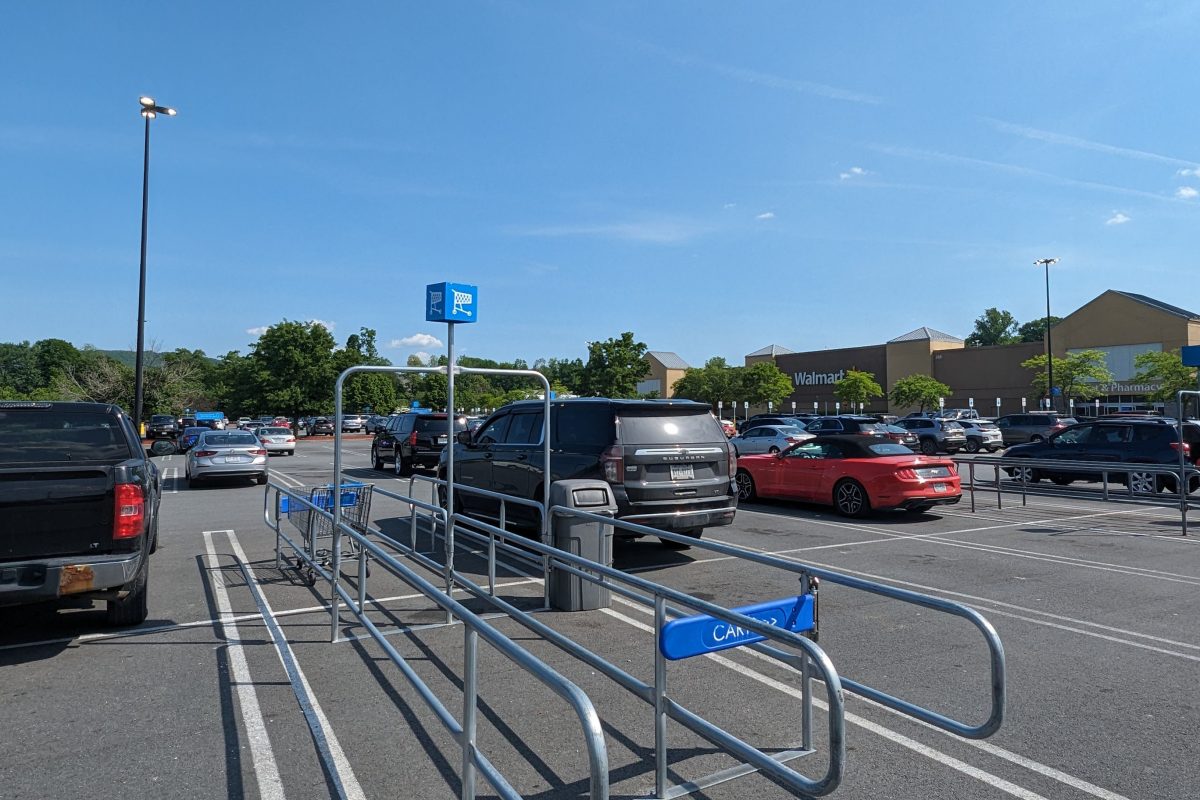
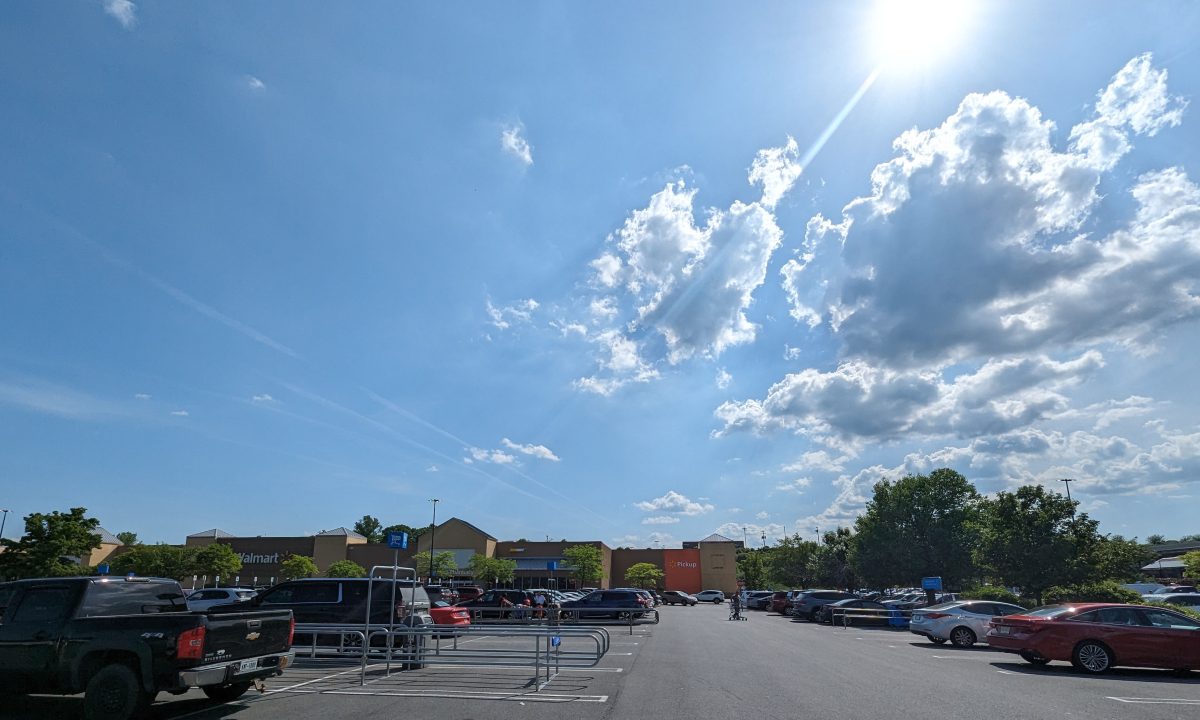
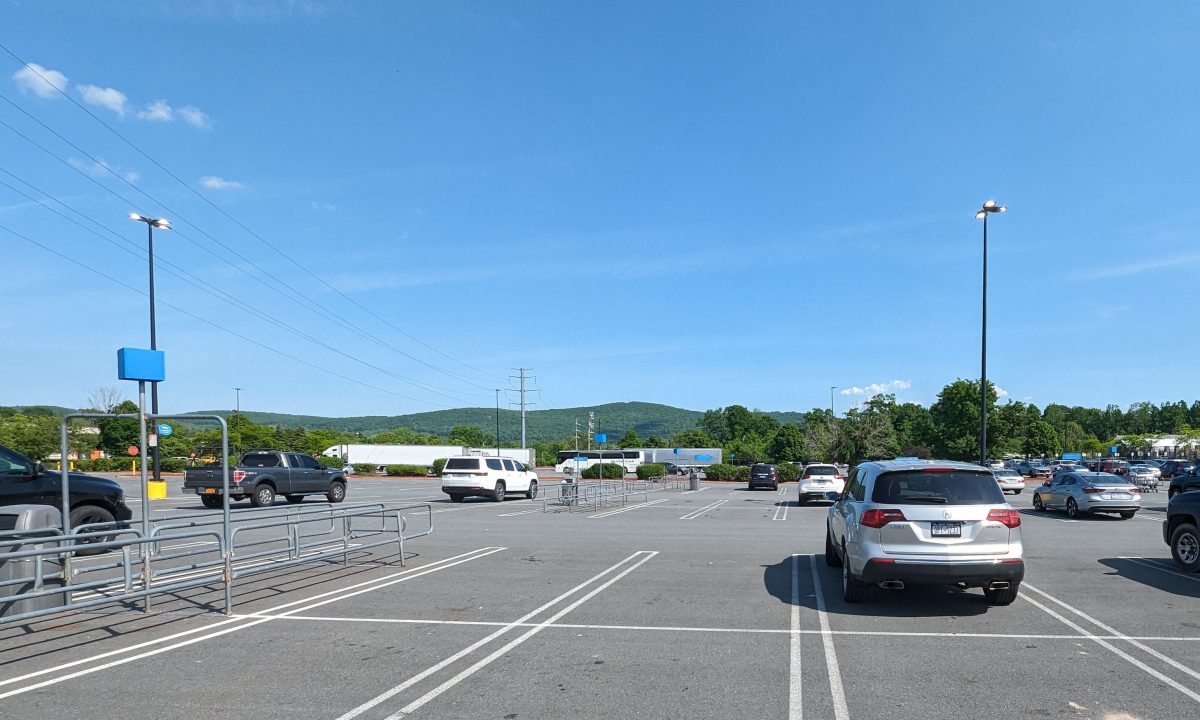
Introduction
At a local Walmart store the other day, despite being in the middle of the day… the lights were on at all the parking overhead lighting. Why is this? It seems likely a mistake. Perhaps it’s due to some unknown condition. Maybe a storm reset their automatic timing or what if the latest software update just broke things– something silly like that?
May 21st is when this first photo was taken, and on another visit 2.5 weeks later, it was verified that the issue persisted (below)

Curiosity Killed the Cat?
This got us thinking… How much is this costing them? How much energy are they wasting?
Surely Walmart… worth over 500 billion US dollars could figure out how to turn on and off their parking lights…?
Building Commissioning
Building commissioning is a topic we’ve briefly covered here, and in the article we write about how it’s frequently overlooked – and many times value engineered off the project. We discuss how ignoring this critical step can cost an owner in the long run, and how easy it is for different building issues to add up, both economically and in energy resources.
Typically, this is a topic that is discussed at very high levels. A lot of, ‘you should do this because it’s going to cost you’ and is ‘energy wasteful’. Well — what does this really mean?
Can we find some real data using this example? Let’s put some theoretical numbers to the scenario of Walmart keeping their parking lot lights on when they shouldn’t have them on – during daylight. We’ll have to make a lot of assumptions, but it could be a fun little exercise.

Ballpark Calculations
Location Numbers
There are currently 4,609 Walmarts located in the US. For purposes of this exercise, we’ll ignore all the international Walmarts which are about 5,500; and just focus on the cost to the US segment of their enterprise.
Note
Keep in mind that this decision alone means we are only accounting for 40% of their stores, so if this was actually an issue at every single one of their stores, including international— the values would more than double. While this is also very unrealistic, it’s not out of this world to think that all Walmarts across an area all employ the same technology to handle system ‘X’. And if that system fails for one, it may affect hundreds of stores. So while some numbers may feel overstated, it quickly becomes more realistic as we go.
Factor
We’ll also be a bit more realistic here, let’s assume that only 25% of the stores have this issue, maybe it’s more of a regional thing. This leaves 1,152 stores with this theoretical ‘issue’. For sake of keeping things easy, we are going to assume this ‘issue’ only hit the Walmart Supercenters which is where this was observed. So 1,152 of the 3,559 supercenters (~32% of the locations), or 1,152 of the 10,607 total Walmart locations (~10.9% of all locations).
Geographical Location
Because their footprint is so large, and their locations are pretty well spread across the US, it makes sense to take a middle latitude state and utilize that for the calculations — this is really only needed for daylight hours and the more daylight for Texas would roughly balance out the less daylight in Maine type of thinking.
Rogers, Arkansas
Rogers is the location of the first Walmart. This location is a bit further South than an estimated ‘geographical center’ but it means that our numbers will error on the safer side. Beyond this, the Walmarts developed and spread as a business from this central geographical location, so it’s probably a bit more accurate anyway with more density of Walmarts located in the surrounding states.
Daylight Time & Operating Hours
Doing a quick browsing, it seems that most Walmarts have operating hours that open really early and stay open relatively late. Many are 24 hours even. With most having opening hours of 6am, and staying open until 10pm or later, we don’t really have to consider operating hours at all. In other words, Walmart is always open, every day, and will be open when the sun is out. This keeps it simple and once again errs on the safe side — if Walmart stores were closed on Sunday that would exacerbate the issue as it should have minimal lighting at night when no one is there. We’ll also ignore times when shadows or storms would briefly cast the walmart in shade and may require lighting.
Daylight in Rogers
Therefore, we just need to know how many daylight hours there are in Rogers for the year. This is also known as ‘day length’ or ‘daylight duration’ – how many hours the sun is above the horizon. Luckily, we don’t need to add up sunrise and sunset for every single unique day, rather we can just find the equinox values for the location. This is going to be on either the spring equinox (~March 21st) or fall/autumn equinox (~Sept 21st).
As you can see these are basically the same value. For the Northern hemisphere, in March, the days are starting to get longer; while in September, the days are starting to get shorter. For our value, we will use 12 hours and 10 mins.
Twilight
While 12 hours and 10 mins is the full day length, we need to assume that the lights ‘should’ be on for safety at least a half hour after official sunrise and a half hour before sunset. This helps us make nice numbers; so we’ll reduce this value by 2 hours and 10 mins, and go with 10 hours flat of daylight. This also helps correct for those random couple of storms where lights should be on.
Total Daylength Per Year
10 hours a day average, multiplied by 365 days gives us a total time of 3,650 hours. This is the amount of time 1 location experiences daylight, or in other words; where the lights, ‘should not be on’. Multiplied by the amount of stores that have left the lights on (1,152)… we get a total of ‘wasted’ daylight across the Walmart fleet of 4,204,800 hours.
Fixture Guess
We are getting into the real guesses part and making some huge assumptions here. First we have to figure out what light fixtures in the parking lots are actually used by Walmart. Referencing this article from 2016, which seems to at least be somewhat reliable with Walmart quotes — it states that the parking lot lights on their particular project are:
“Walmart has found that the Current Evolve™ LED Area Lights installed in their parking lots provide a noticeable reduction in both on- and off-site glare, as well as improvements in trespass control, light uniformity, vertical illuminance and visual clarity.”
Safe Side Guess
This article is furthermore about energy efficiency and savings; discussing briefly a plan to upgrade 200 Walmarts with the lights. Written 8 years ago, it would be silly to assume all Walmarts were upgraded with this particular light. Many will have legacy halide lights or other forms that are much worse in energy performance. This means that if we use this fixture, we err on the safe side once again.
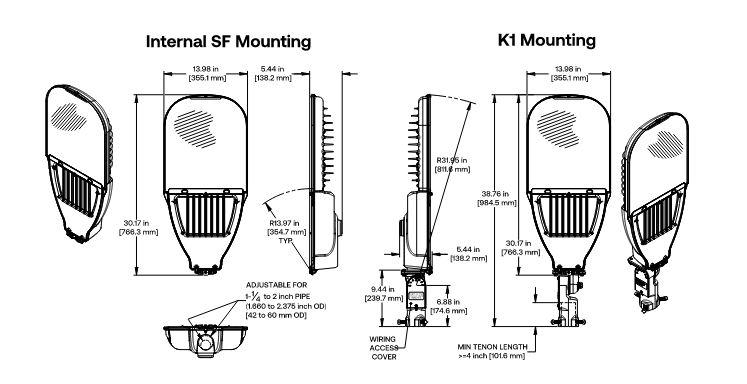
Current Evolve LED Area Light Facts
If you’ve ever spec’d lighting, you know that whatever you spec at the front of the project will probably be outdated and replaced by the time to purchase. Innovation and change in the lighting space is blistering fast, and this is the case for these lights as well… we cannot find the exact product on Current’s website.
Evolve LED Light
Therefore we will use this Evolve ERLS Outdoor Light. Here is the spec sheet for this particular light. This light has the same form factor as the Walmart lights in our pictures, as well as being stated for the exclusive use of roadways and parking lots (with no other Evolve option).
As a newer light, this light will be more efficient than the previously stated 2016 article, and it seems to be the ‘newest’ and most energy efficient version of the same product line from what we can tell. This further means our numbers will be lower than they actually are.
Energy Usage
If you are a lighting engineer and reading this, please fact check and submit corrections. As Architects, we have a tenuous grasp (at best) on the lighting specifics.
The stated watts of this fixture range from 148 to 342 Watts. This is due to the fixture providing different levels of lumen output from 25,000 lumens all the way up to 48,000 lumens. These different modes/settings have different use cases depending on light geometry and levels needed such as wanting to better cast light along roadways vs needing parking area general lighting.

Forward Throw
We will choose one of the more general flood lighting areas that seem to provide less linear lighting disbursement and more general lighting as everywhere in the lot needs coverage. We’ll choose the Type IV 45,000 lumens 4000k Forward Throw version. Referencing the table we can see that the 45 lumen output is equivalent to 302 wattage (regardless of voltage).
Watt-Hours
This means that one light fixture is using 302 watt-hours per hour.
- Note: The hours in this technically cancel eachother out. You could for example say that the fixture uses 302 watt-seconds per seconds, or 302 watt-years per year.
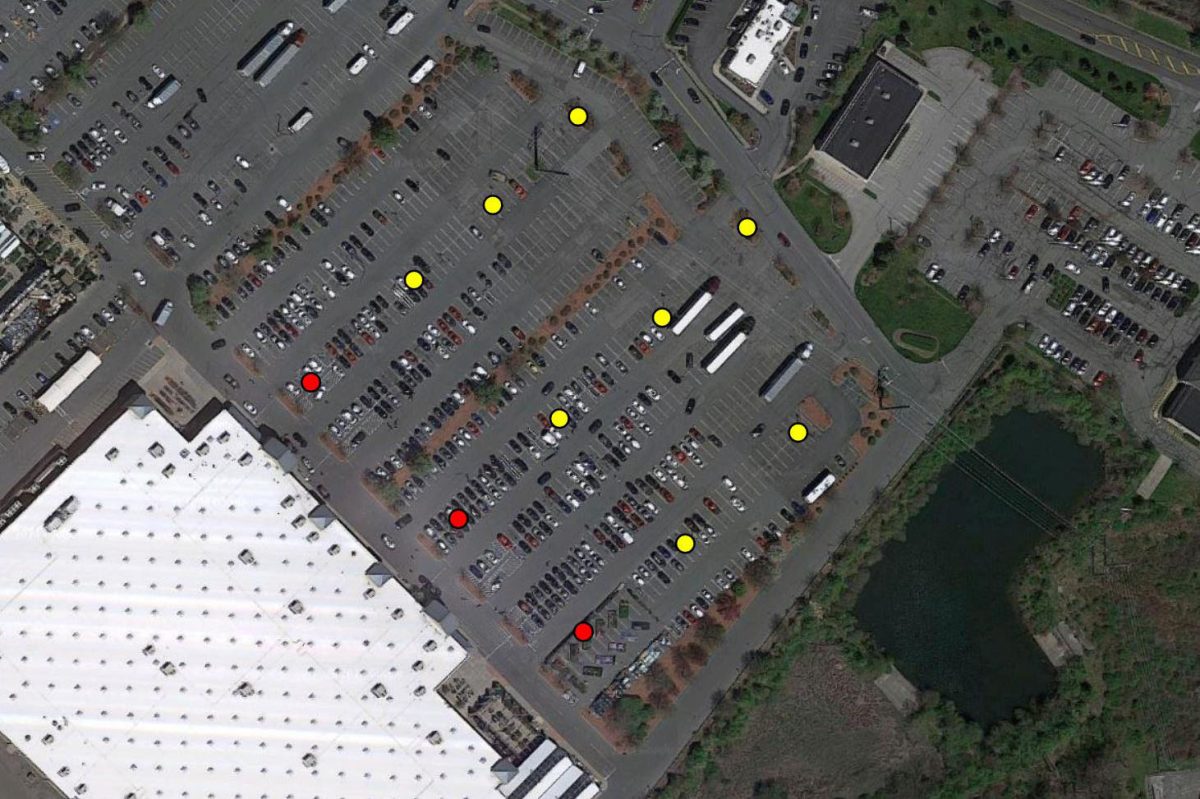
Fixture Count at the Supercenter
While this is the usage of 1 fixture, we need to understand more about how many fixtures we are placing across the parking lot. At the Walmart where this was first noticed, doing a manual count we have discovered that there are 11 light poles placed across the lot. Of these 11, (3) of the poles had 4 lights (Red in Image), while the other (8) had 3 lights (Yellow). This brings the total lights for this location to (3*4) + (8*3) = 36 LED fixture lights.

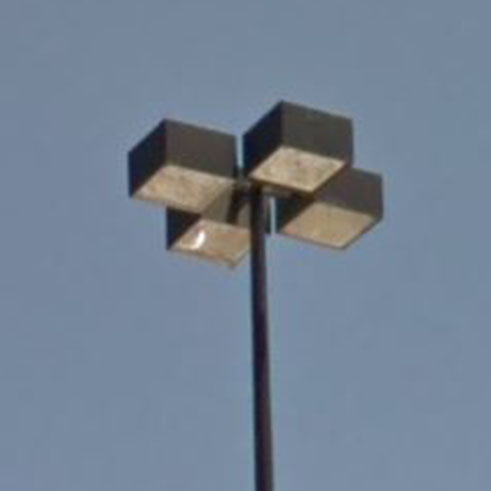

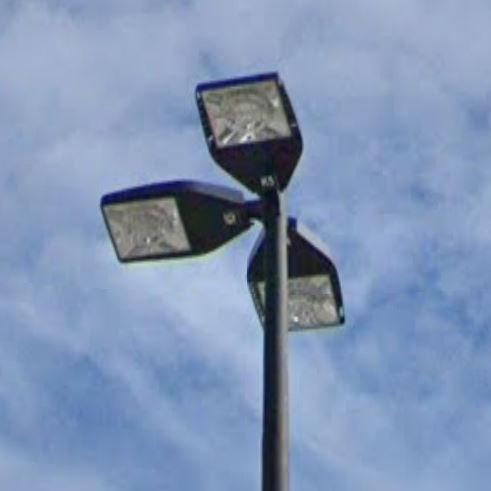
Spot Checking Others
Rogers, Arkansas
At a Rogers, Arkansas Supercenter, manually counting we get (2) 1 fixture poles, (7) 2 fixture poles, (8) 3 fixture poles, for a total of 2+14+24 = 40 LED fixtures. These in the street view appear to have been updated to the flat LED style form factor similar to the ones we observed. Note that in 2017 it appears they had the old ones, and sometime before 2018 updated.
Sumter, South Carolina
This one has (8) 3 fixture poles, (4) 2 fixture poles for a total of 24+8 or 32 LED Fixtures. This also has been updated to the LED style form factor.
Conclusion
This is a rough guesstimate, as some locations seem to have larger lots and some even appear to have Walmart gas or other extra spaces. Upon researching, Walmart does own the vast majority of their lots so it’s also reasonable to anticipate that they pay their own utilities.
Because of our spot checking, we will use 36 fixtures as the baseline, since it is what was observed, as well as (conveniently) being in between our two spot checked other Supercenters.
Fixture Count Watt-Hours
Taking this average amount of 36 lights and multiplying it by the 302 watts. This gets us to 10,872 watts per location. To get the amount of kW we will divide by 1,000 to convert from watts to kilo-watts. This gives us 10.872 kW.
Now we multiply by the amount of hours that the entire fleet of stores are wasting in our theoretical example and get (10.872 kW * 4,204,800 hours) = 45,714,585.6 kWh, or to simplify, just 45,700,000 kWh.
What is the Cost?
Updated daily, this average cost across the US is 16.68 cents per kilowatt-hour. At the time of writing, Hawaii had the highest cost at 45.25 cents, while North Dakota had 10.44 cents.
Multiplying 45,700,000 kWh x $0.1668 gets us a total cost of $7,622,760.
Cost Per Walmart
Doing this a bit backwards, but if we then divide this value by the amount of stores in our study, we get the value and cost per store per year.
$7,622,760 / 1,152 stores = $6,617 per store per year, or about ~$550 per month of cost.
Drop in the Bucket
$7.6 million is a lot of money to most people… it’s even a lot to many small businesses with less than 2% of all small businesses making more than $1 million in revenues a year (this is revenue, not profit). However, Walmart is a 500 billion dollar company that reported $158 billion in gross profit for fiscal year 2023.
Each of their stores does typically over $1 billion in revenue a year.
These numbers are hard to fathom. $7.6 million represents just .000048% of their profit for the year. This is a rounding error for them. Even if we were to adjust the numbers for all the stores it would still just be a rounding error. In other words, Walmart does not care, and will be spending their resources in other areas where streamlining their operations can get them more bang for their buck. (even though this is pretty low hanging fruit to fix)
Death By A Thousand Cuts
And really, this isn’t an issue when isolated on its own (in this theoretical thought experiment). When this becomes an issue is when many different pieces of a business start to deteriorate or wasted energy happens across multiple different processes or equipment. Imagine if the lights inside the store are also left on when they shouldn’t be. Or perhaps loading dock doors aren’t properly closing meaning the heat/cooling works overtime, what if the MEP system isn’t tuned correctly and the motors are burning out faster requiring quicker chiller and boiler replacements, etc.
All of these different systems need to be engineered and fine tuned to make sure that a client isn’t wasting any money or resources. If these systems start to add up, the .000048% can quickly grow to be a non-ignorable value in the economics of the business and on the spreadsheet– especially during tough economic times.
Conclusion: The Energy Economics; The Real Cost
Even though the $7.6 million wasted money won’t hurt the Walmart economics, there is still a value to think about. The wasted energy is the biggest concern. This is energy that is being wasted for literally no benefit to anyone, and in a world where energy is starting to become more expensive and resources are becoming evermore scarce, this becomes a bigger factor in operational efficiency. Especially for companies that have committed to going ‘green’… Walmart has committed itself to going carbon neutral by 2040. If they intend to meet this goal with room to spare, they will ultimately need to address energy inefficiencies such as this, across their entire fleet.
For reference, the average US home uses 10,791 kWh per year. If we do the math, this 45,700,000 kWh is equivalent to the yearly electricity use of 4,235 homes. This is an incredible waste, simply due to keeping the lights on in parking lots when it is light out.
Imagine if Home Depot, Target, [insert any big box store] also has this problem. The amount of energy wasted simply for parking lot lights would equate to a small city’s worth of needs for the year. It’s for this reason that it’s critical to make sure buildings are running at the most realistic efficiency possible; not just for the clients sake, but to help keep energy available and energy costs low for everyone.
Hopefully, someone at Walmart will remember to start turning off the lights (during the day).






Leave a Reply
You must be logged in to post a comment.